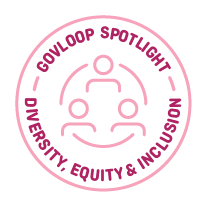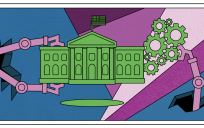Diversity, equity, inclusion and accessibility are perennially important topics in the government that President Biden’s June executive order has amplified. To understand how the Homeland Security Department, which has more than 240,000 employees, tackles these issues, we spoke with Sharon Wong, DHS’s Chief Diversity and Inclusion Officer and Executive Director for Strategic Recruitment, Diversity and Inclusion.
This interview has been lightly edited for clarity and length.
Why should agencies care about DE&I?
We have all read the research, we have read articles that say, DEI — along with A, the accessibility that’s now in the new executive order — how these lead to higher organizational performance. More diverse teams do better. When you’ve got the complex mission spaces of federal agencies, they require diverse perspectives and inclusive teams.
At DHS, our mission is about engaging with all segments of society and segments of the public, and so we need employees with the cultural competency and ability to really communicate and connect with not just our citizens but potential citizens. The federal government, as you talk about it being the country’s largest employer, should be a model employer.
What is DHS’s DEIA strategy?
At the end of last year, we came up with the Inclusive Diversity Strategic Plan (IDSP), and notice I call it inclusive diversity. We said, “It’s not D and I. It’s inclusive diversity.” When people think of D and I, people think of diversity or inclusion. We decided to flip that because it’s about how do you include the diversity that you have. Our plan was about elevating the human experience.
Our first goal was unleashing the power of our shared human spirit. This is about empowerment at the individual level and how each person’s potential to be at their maximum best is unlocked. Our second goal is expanding opportunities to grow and serve the nation together. This is about ensuring that we’re reaching all segments of society, that no one is left behind when we do outreach and recruit, that everybody has the opportunity to grow and develop, feel that they belong, and use their individual experiences to inform the workplace.
Our third goal is leading with intention to make a difference. This speaks to each of us, not just leadership by rank and title. Everybody can be a leader. You can lead from where you are.
How does this play out?
DHS is one of the most diverse workforces in the federal workforce. Forty-seven percent of our employees identify as an ethnically or racially diverse group. In the federal workforce, it’s 38%. A best practice was putting out IDSP and our educational curriculum. Nearly 400 of our executives have participated in our inclusive diversity leadership seminars.
Two years ago, we started Inclusive Diversity Dialogue Programs, cohort-based groups of about 15 to 20 employees who come together every other week to talk about issues in the workplace, particularly around inclusive diversity. One week it might be around the values of the organization or ethnicity and race. We have such high demand that we always have a waitlist.
In addition to being the Chief Diversity and Inclusion Officer, I’m also the Executive Director for Strategic Recruitment Diversity and Inclusion (SRDI). When people do councils, they’ll do one for recruitment and one for DEI. I put them together. Our recruiters hear about DEIA concerns, and DEIA folks hear the concerns of recruiters, so they can mesh together.
How does data play a role in DEIA?
DEIA is like any other management principle. It has to be data-driven and evidence-based. We have a robust set of metrics. On a quarterly basis, we look at our diversity trends because we want to see what are our barriers to employment opportunities for all. We look at it across the board because diversity is not just for underserved groups; it’s for every single person.
We also use the Federal Employee Viewpoint Survey. It only comes out once a year, but we still use it to measure employees’ perception of their organizations because that helps inform decision-making. Another tool we developed is the Strategic Marketing Outreach and Recruitment Engagement System. It tracks our outreach and recruitment in real time, and it gets metrics like where did you go, who was the target audience, what school, military installation, which state. We have a whole lot of data and we cut it every which way.
Are there any common pitfalls with DEIA agencies should avoid?
One of the common pitfalls is the sole focus on diversity. If you only focus on the diversity that you’re bringing in, you’ll do recruitment. But when they come in, are they given opportunities for development, growth, promotion? If you’re not retaining them, it’s a revolving door. It’s not just counting people. It’s making sure that people count.
You can find additional GovLoop resources about DEIA here.






Leave a Reply
You must be logged in to post a comment.